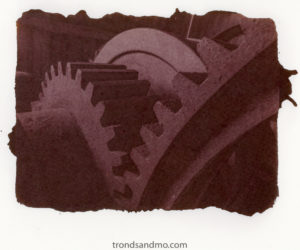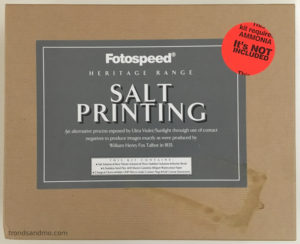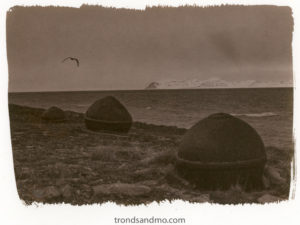Posts in Category: Salt print
Working with salt print
 By coincidence I stumbled over a youtube video that inspired me to examine the old alternative printing techniques more closely. Salt print was the first photographic printing technique I heard about. Ironically it is also the first photographic printing technique ever invented beating the Calotype/Talbotype with two years.
By coincidence I stumbled over a youtube video that inspired me to examine the old alternative printing techniques more closely. Salt print was the first photographic printing technique I heard about. Ironically it is also the first photographic printing technique ever invented beating the Calotype/Talbotype with two years.
Salt print was the most popular photographic print technique in the middle of the 19 century (1839-1860). In the dark room, silver nitrate solution was brushed on to a salted paper (standard table salt, sodium chloride). This led to a chemical reaction between the silver and salt, creating the light sensitive silver chloride. Once dry, the paper with the negative were put together in a contact printing frame and exposed to sunlight. When the exposure was ended, the print were stabilized in a strong solution of salt. And a final wash in hypo (sodium thiosulfate) made the print light-fast.
 In Norway, most chemicals are really hard to purchase. For example silver nitrate in crystalline form is will not be sold to a private person. It is different for a registered business. This is probably so to prevent people against misuse, however it does not make it easy for a wannabe print expert with good intentions. Luckily I found a salt print kit that is legally sold here. I guess that the concentration of the chemicals is that makes it legal or illegal. Unfortunately the kit says little about what it exactly contains, and it gives me some trouble during the process.
In Norway, most chemicals are really hard to purchase. For example silver nitrate in crystalline form is will not be sold to a private person. It is different for a registered business. This is probably so to prevent people against misuse, however it does not make it easy for a wannabe print expert with good intentions. Luckily I found a salt print kit that is legally sold here. I guess that the concentration of the chemicals is that makes it legal or illegal. Unfortunately the kit says little about what it exactly contains, and it gives me some trouble during the process.
If I was to implement the method completely authentic, I had to have access to a daguerreotype negative or similar. I have not, so I choose to create a more modern photographic negative. In Lightroom and Photoshop I convert the selected image to black and white. Then I invert the picture and makes a horizontal flip. The last step is to print the image to a transparent foil with an inkjet printer.
 The problem with this kit is primarily lack of information on what the chemicals contain. Both silver solution and stabilizes / toner missing this important information. It is described that the different toners / stabilizers gives brown, red and blueish look, but nothing more. I choose to instead use ordinary hypo giving a brownish tone. When it comes to the choice of paper, I think hot pressed satine aquarel paper gave me the best results. I see from the prints I made that bright parts are too dark. Whether this is because I am a bad editor in photoshop or salt print technique is not better I do not know.
The problem with this kit is primarily lack of information on what the chemicals contain. Both silver solution and stabilizes / toner missing this important information. It is described that the different toners / stabilizers gives brown, red and blueish look, but nothing more. I choose to instead use ordinary hypo giving a brownish tone. When it comes to the choice of paper, I think hot pressed satine aquarel paper gave me the best results. I see from the prints I made that bright parts are too dark. Whether this is because I am a bad editor in photoshop or salt print technique is not better I do not know.
If I got hold of pure silver nitrate I would not used it in standard salt print. I rather go for the album print technique. That technique is much like the original salt print, however using egg white in addition to salt. It is told that the print is ON the paper not IN the fibers of the paper (which is the case with salt print). It will be a much better results.
Well, at the moment I am out of the silver solution provided with the kit. So I think I have made the last salt print. It was interesting, but not a technique for a high quality photo print.
Save
Save
Save